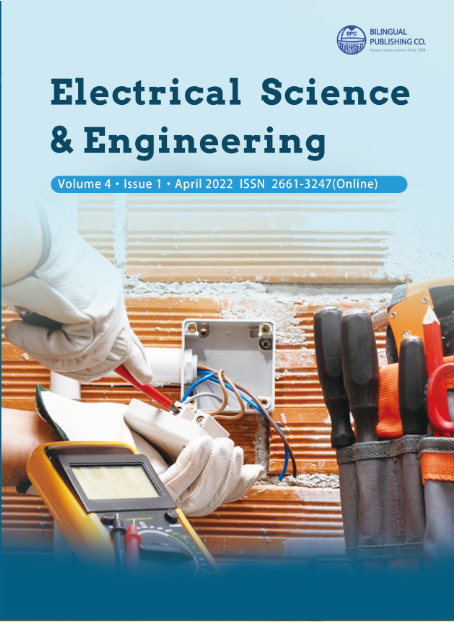-
139
-
125
-
124
-
117
-
114
Research on Self-balancing Two Wheels Mobile Robot Control System Analysis
DOI:
https://doi.org/10.30564/ese.v4i1.4398Abstract
The paper presents the research on self-balancing two-wheels mobile robot control system analysis with experimental studies. The research problem in this work is to stabilize the mobile robot with self-control and to carry the sensitive things without failing in a long span period. The main objective of this study is to focus on the mathematical modelling of mobile robot from laboratory scale to real world applications. The numerical expression with mathematical modelling is very important to control the mobile robot system with linearization. The fundamental concepts of dynamic system stability were utilized for maintaining the stability of the constructed mobile robot system. The controller design is also important for checking the stability and the appropriate controller design is proportional, integral,and derivative – PID controller and Linear Quadratic Regulator (LQR). The steady state error could be reduced by using such kind of PID controller.The simulation of numerical expression on mathematical modeling was conducted in MATLAB environments. The confirmation results from the simulation techniques were applied to construct the hardware design of mobile robot system for practical study. The results from simulation approaches and experimental approaches are matched in various kinds of analyses. The constructed mobile robot system was designed and analyzed in the control system design laboratory of Yangon Technological University (YTU).
Keywords:
Mobile robot; Self-balancing robot; Control system design; PID controller; Dynamic control system analysisReferences
[1] Peng, K., Ruan, X., Zuo, G., 2012. Dynamic model and balancing control for two-wheeled self-balancing mobile robot on the slopes. Proceedings of the 10th World Congress on Intelligent Control and Automation. pp. 3681-3685. (Accessed 9 September 2021).DOI: https://doi.org/10.1109/WCICA.2012.6359086
[2] Bin, H., Zhen, L.W., Feng, L.H., 2010. The Kinematics Model of a Two-Wheeled Self-Balancing Autonomous Mobile Robot and Its Simulation. 2010 Second International Conference on Computer Engineering and Applications. pp. 64-68. (Accessed 18 September 2021). DOI: https://doi.org/10.1109/ICCEA.2010.169
[3] Gong, D., Li, X., 2013. Dynamics modeling and controller design for a self-balancing unicycle robot. Proceedings of the 32nd Chinese Control Conference. pp. 3205-3209. (Accessed 27 September 2021).
[4] Nikita, T., Prajwal, K.T., 2021. PID Controller Based Two Wheeled Self Balancing Robot. 2021 5th International Conference on Trends in Electronics and Informatics (ICOEI). pp. 1-4. (Accessed 8 October 2021).DOI: https://doi.org/10.1109/ICOEI51242.2021.9453091
[5] Philip, E., Golluri, S., 2020. Implementation of an Autonomous Self-Balancing Robot Using Cascaded PID Strategy. 2020 6th International Conference on Control, Automation and Robotics (ICCAR). pp. 74-79. (Accessed 9 September 2021).DOI: https://doi.org/10.1109/ICCAR49639.2020.9108049
[6] Jianwei and Xiaogang, 2008. The LQR control and design of dual-wheel upright self-balance Robot,” 2008 7th World Congress on Intelligent Control and Automation. pp. 4864-4869. (Accessed 9 September 2021).DOI: https://doi.org/10.1109/WCICA.2008.4593712
[7] Yu, N., Li, Y., Ruan, X., et al., 2013. Research on attitude estimation of small self-balancing two-wheeled robot. Proceedings of the 32nd Chinese Control Conference. pp. 5872-5876. (Accessed 9 September 2021).
[8] Putov, A.V., Ilatovskaya, E.V., Kopichev, M.M.,2021. Self-balancing Robot Autonomous Control System. 2021 10th Mediterranean Conference on Embedded Computing (MECO). pp. 1-4. (Accessed 9 September 2021).DOI: https://doi.org/10.1109/MECO52532.2021.9459720
[9] Sarathy, S., Mariyam Hibah, M.M., Anusooya, S., et al., 2018. Implementation of Efficient Self Balancing Robot. 2018 International Conference on Recent Trends in Electrical, Control and Communication (RTECC). pp. 65-70. (Accessed 9 September 2021).DOI: https://doi.org/10.1109/RTECC.2018.8625624
[10] Sun, W.X., Chen, W., 2017. Simulation and debugging of LQR control for two-wheeled self-balanced robot. 2017 Chinese Automation Congress (CAC).pp. 2391-2395. (Accessed 9 September 2021).DOI: https://doi.org/10.1109/CAC.2017.8243176
[11] Ruan, X.G., Liu, J., Di, H.J., et al., 2008. Design and LQ Control of a two-wheeled self-balancing robot.2008 27th Chinese Control Conference. pp. 275-279.(Accessed 9 September 2021).DOI: https://doi.org/10.1109/CHICC.2008.4605775
[12] Lv, Q., Wang, K.K., Wang, G.Sh., 2009. Research of LQR controller based on Two-wheeled self-balancing robot. 2009 Chinese Control and Decision Conference. pp. 2343-2348. (Accessed 9 September 2021).DOI: https://doi.org/10.1109/CCDC.2009.5192771
[13] Kongratana, V., Gulphanich, S., Tipsuwanporn, V., et al., 2012. Servo state feedback control of the self balancing robot using MATLAB. 2012 12th International Conference on Control, Automation and Systems.pp. 414-417. (Accessed 9 September 2021).
[14] Gong, Y., Wu, X., Ma, H., 2015. Research on Control Strategy of Two-Wheeled Self-Balancing Robot.2015 International Conference on Computer Science and Mechanical Automation (CSMA). pp. 281-284.(Accessed 9 September 2021). DOI: https://doi.org/10.1109/CSMA.2015.63
[15] Tun, H.M., Nwe, M.S., Naing, Z.M., 2008. Design analysis of phase lead compensation for typical laser guided missile control system using MATLAB bode plots. 2008 10th International Conference on Control,Automation, Robotics and Vision. pp. 2332-2336.(Accessed 9 September 2021).DOI: https://doi.org/10.1109/ICARCV.2008.4795897
[16] Tun, H.M., Nwe, M.S., Naing, Z.M., et al., 2022.“Sliding Mode Control-Based Two Wheels Mobile Robot System”, The 14th Regional Conference on Electrical and Electronics Engineering (RC-EEE 2021), Chulalongkorn University, Thailand. (Accessed 9 January 2022).
[17] Velagic, J., Kovac, I., Panjevic, A., et al., 2021. Design and Control of Two-Wheeled and Self-Balancing Mobile Robot. pp. 77-82. DOI: https://doi.org/10.1109/ELMAR52657.2021.9550938
[18] Pajaziti, A., Gara, L., 2019. Navigation of Self-Balancing Mobile Robot Through Sensors. IFAC Papers Online. 52-25, 429-434.DOI: https://doi.org/10.1016/j.ifacol.2019.12.576
[19] Chhotray, A., Pradhan, M.K., Pandey, K.K., et al., 2016. Kinematic Analysis of a Two-Wheeled Self-Balancing Mobile Robot. Proceedings of the International Conference on Signal, Networks, Computing, and Systems, Lecture Notes in Electrical Engineering. Springer India. 396.DOI: https://doi.org/10.1007/978-81-322-3589-7_9




 Hla Myo Tun
Hla Myo Tun





